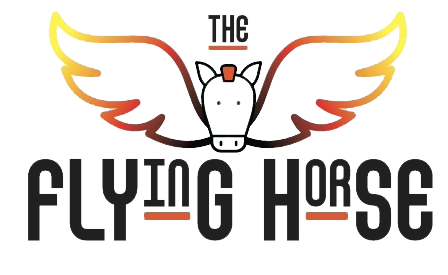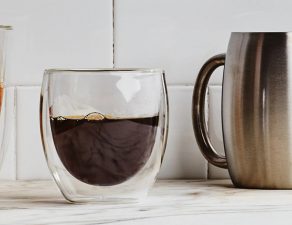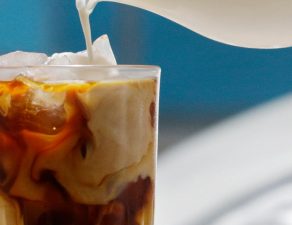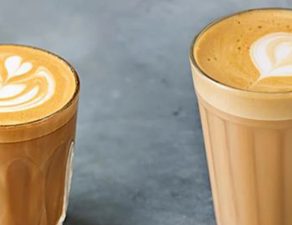
How to Make Your Coffee Latte Art Look FLAWLESS with These 5 Simple Tips
The art of making lattes is frequently the most alluring thing for a newbie barista, and it’s a great way to enter the fascinating coffee metaverse. Latte art is simple to learn, but it takes a lot of practice and perseverance to perfect the patterns. Here are some suggestions I made to help you improve your latte art!
Make the milk smooth and velvety
When creating espresso-based beverages, steaming your milk may appear difficult, and people frequently believe that this is the toughest step to complete.
I would want to object. Espresso is far trickier and more complicated, in my view. Actually, I’m quite sure I’ll never really comprehend espresso. But with a few quick steps, it’s simple to make that milk velvety smooth.
You have to do these three things correctly:
- Where you place your wand
In the milk pitcher, create a sizable whirlpool to help suck out any air bubbles while smoothening out your milk. Latte art can only be created with milk that is smooth. Lean your pitcher slightly so that the wand is positioned in the centre of the pitcher and with about 30% of its length out from the side. A massive whirlpool is guaranteed in this posture!
- Milk with the appropriate air quantity
You should notice a sucking noise as soon as you turn the wand on. If not, slightly put down your pitcher until this sound becomes apparent. It will be very difficult to create latte art by using extremely murky or milk with no foam, therefore the air must be just right. I try to keep to the traditional hearts and tulips when using cappuccino milk (which has a little more froth). You can create anything by using latte milk (and a little foam): hearts, tulips, rosette’s, caffeinated zebras, swans etc.
- Temperature of the milk you steam.
Steamed milk should be served at a temperature that range from 55 to 62 degrees Celsius. Certain people set their ideal temperature for latte art at 50 degrees. Then again, if you don’t want to lose your customers, I don’t suggest serving them beverages that cold. The biggest issue with lattes is when the temperature exceeds 70 degrees.
What’s wrong with milk that’s been “boiled”? The milk’s proteins begin to alter and denaturize as a result of the heat, which results in a lack of sweetness, flavour, and texture. When milk gets heated over 70 degrees, macrofoam is practically hard to produce. If you want your latte “very hot,” tell your customers to order it between 55 and 62 degrees.

Bases come first, then art
People frequently overlook contrast when creating latte art. Even your flawlessly created swan will appear cluttered in the absence of contrast. For this reason, you need to pour the milk through its crema very carefully at first. Your painting will be created on this dark brown cream mixture, which will serve as your canvas.
When I pour latte art, I often pour from two different heights: they are 5 cm and 0,5 cm which should be from the drink’s surface. When I wish to create the basis or canvas for the painting, I utilise a 5 cm distance. I begin pouring in the centre of my cup as I work my way around it in spiral motions. Depending on the design I choose, I will keep doing it this way until the cup is loaded to a capacity that is between 40 and 70%. The surface tension of the cup will increase as it fills up. Start early when looking to create large designs so that surface tension won’t stop the spreading of this pattern.
Approach and lean your cup.
After creating the canvas, you may begin creating the artwork. You must approach extremely near to the cup’s surface (around 0.5 cm) in order to create the art. You must bend your cup to get pretty near to its surface. Otherwise, if you maintain the straight position of the cup, you could either be far away or you’ll have to quickly make the pour, which won’t likely regulate your pattern. As you get near the surface, you’ll discover that you may pour leisurely and you don’t have to do this urgently. There will always be tulips around. It is certain that it will appear.
Then again, another point to note is how you are holding your cup. How do you hold your cup? By its handle, side, or bottom? Look for a way that is most comfortable to you. Pouring the latte art should be fun and convenient all the way.
Take a video of you and other people.
This was quite helpful. You can’t know what s wrong when you’re pouring, but when you video yourself, you can work on your technique. Check to know whether you are sufficiently near the surface or if you need to get there sooner. When the café is quiet, have fun recording one another with your co-workers. You advance every time you get feedback.
Be tenacious and diligent.
This advice is possibly the most crucial. An elite athlete is said to require 10,000 practice hours. Though it may not take that long, latte painting will undoubtedly demand commitment. If after a week of practice, you still can’t create a heart, don’t worry. I spent almost six months on it. It also took me a sometime to improve my latte painting skills. The number of times you pour will undoubtedly translate into wonderful latte art with your coffee.
I sincerely hope these suggestions prove useful to you! You can send us a private message anytime on Instagram (@theflyinghourse) if you feel confused about something, we should be able to assist you! Have fun while being inventive! Contact The Flying Horse Cafe Molendinar





